Singapore posed a big challenge for us. It is by far one of the most expensive countries in Asia – with high standards of living to match, of course. We couldn’t even begin to afford Singapore on the budget of $35 per person per day we’ve had pretty much all year. So we gave ourselves just two days to squeeze in as much Singapore goodness as we could. We made the most of it!
In preparation, we did something we almost never do anymore – we planned a detailed 2-day itinerary. While we’re usually not big Lonely Planet users, we ended up following some semblance of LP’s walking tours of Singapore. With Johor Bahru in Malaysia as our home base, we commuted back and forth for two days to avoid expensive accommodations in Singapore and minimize our spendings.
Singapore Chinatown
We entered Singapore on Day 1 from Johor Bahru via the Woodlands Crossing in the northern tip of the island. A long metro ride later, our first stop was Chinatown, where we promptly sat down for a delicious meal of Hainanese chicken rice for breakfast. I had been holding out to have this in Singapore and I wasn’t disappointed. (If it isn’t apparent already, we came to Singapore to sightsee, sure, but just as much to eat.)
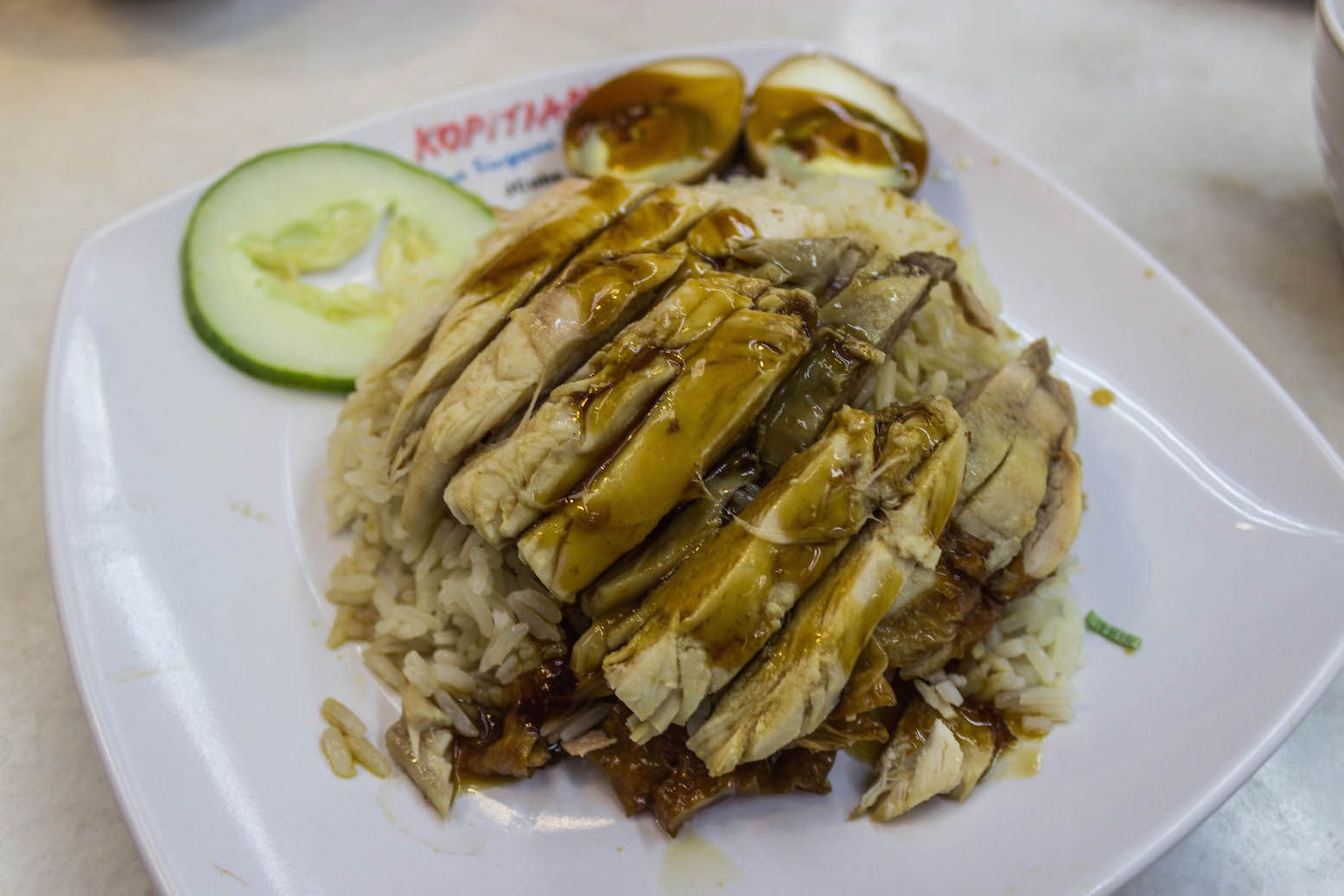
We took a short walking tour in Chinatown, all the while snacking along the way. Sri Mariamman Temple, then stopped for an egg tart break (it’s been a while!). Buddha’s Tooth Relic Temple, then stopped for an ice cream sandwich. One thing I have to say about the Buddha’s Tooth Relic Temple in Singapore was that it was free with no lines – we couldn’t believe we went to so much trouble back in Kandy, Sri Lanka for the same thing!

At some point, Carlos turned to me and said, “This is the cleanest and most organized Chinatown I have ever been to. They even issue receipts!” I laughed but had to agree. Even after a storm with vendors setting up after all the rain, it was probably cleaner than most places we’ve been on this trip. Hawker centers (open-air centers with many cheap food stalls), like the Maxwell Food Centre, were pretty spotless, too. Too bad we were already stuffed! It’s days like this when I wish I could eat and eat and eat without ever getting full.
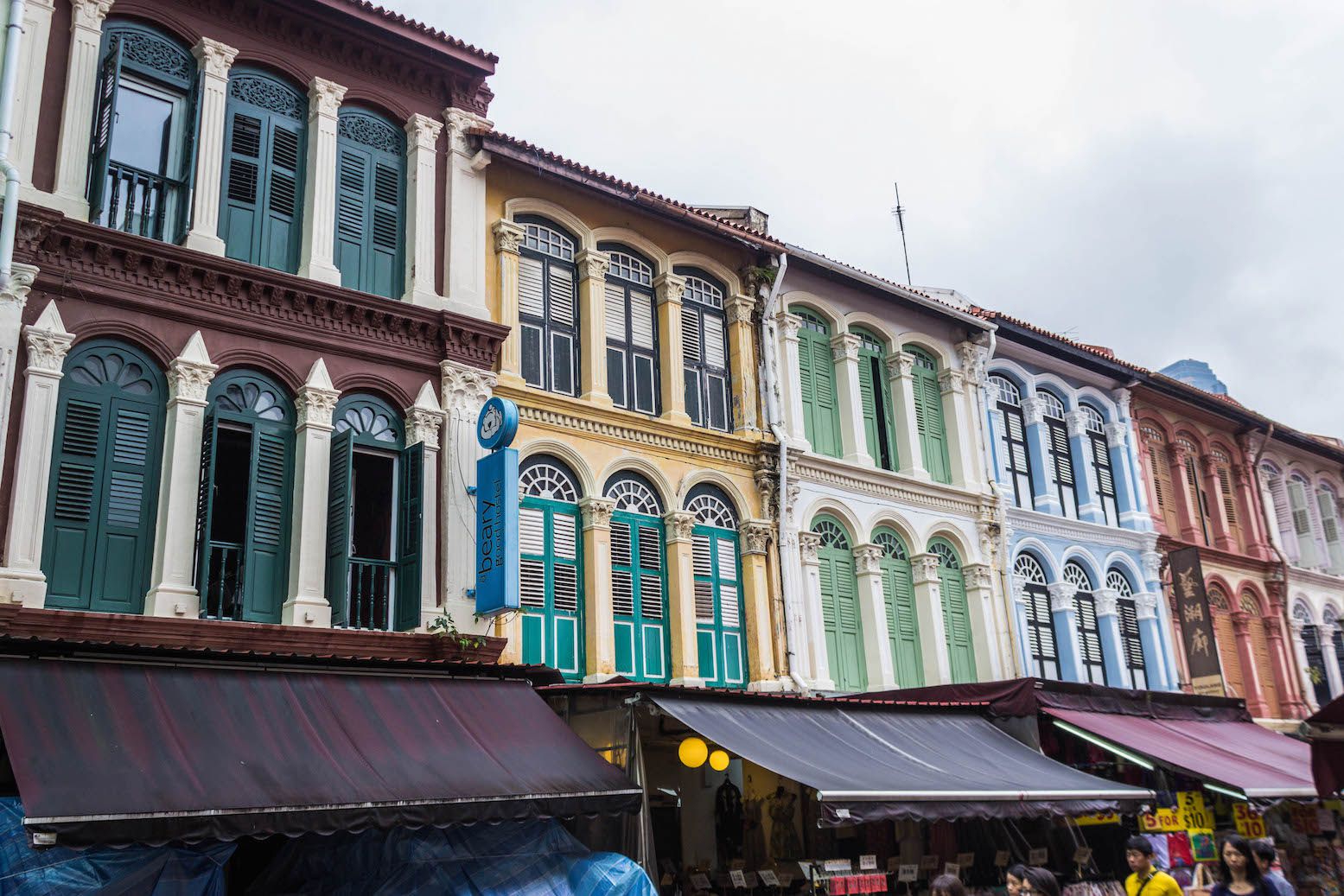
Marina Bay
The main reason for visiting Marina Bay was to see the iconic Marina Bay Sands and Gardens by the Bay in the Singaporean skyline. We would have loved to lounge in the Marina Bay Sands rooftop infinity pool, but unfortunately that’s only open to guests of the resort. One of these days!

Gardens by the Bay was top of the list of things we wanted to see in Singapore. Built on 250 acres of reclaimed land, the park has three waterfront gardens. We didn’t go into any paid sections of the gardens, but just the view of the Supertrees Grove was spectacular. I bet the view at night is even more stunning with lights.

From our vantage point on the bridge connecting Marina Bay Sands to the gardens, we could also see the surrounding area around Marina Bay, including the Singapore Flyer in the background. Little did we know that we would later be on the other side of the bay, looking back.
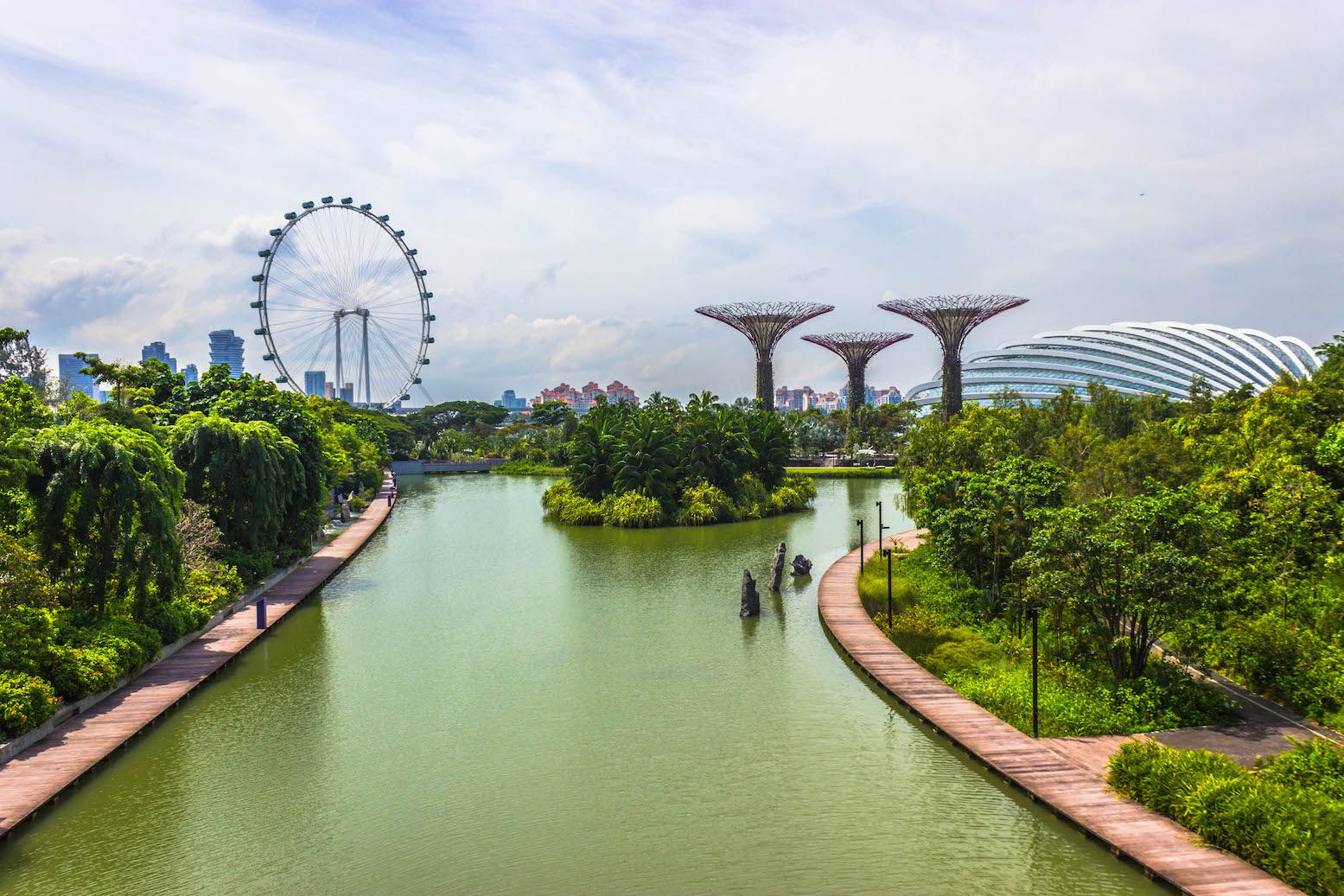
Singapore River and Downtown Core
Our tour in this area of town began at Raffles Place. The historic Cavenagh Bridge and nearby Fullerton Hotel welcomed us to the riverfront. It had more of a charming riverside feel than I expected for the middle of downtown, a modern quaintness of riverside cafes below towering skyscrapers.

Right around the riverbend, we once again faced Marina Bay, this time from the west. Prominently featured on the waterfront sits what’s considered the national personification of Singapore: the Merlion. The fish body represents the fishing village that Singapore began as, while the lion head references Singapore’s “lion city” name.

Behind the Merlion lies the central business district of skyscrapers with some of the biggest names in the world. In front, the Merlion faces an open view of the entire bay, from Esplanade Bridge to the Singapore Flyer, the ArtScience Museum to Marina Bay Sands. While the statue itself is a bit odd, there’s no doubt it’s located in one of the best spots in all of Singapore.
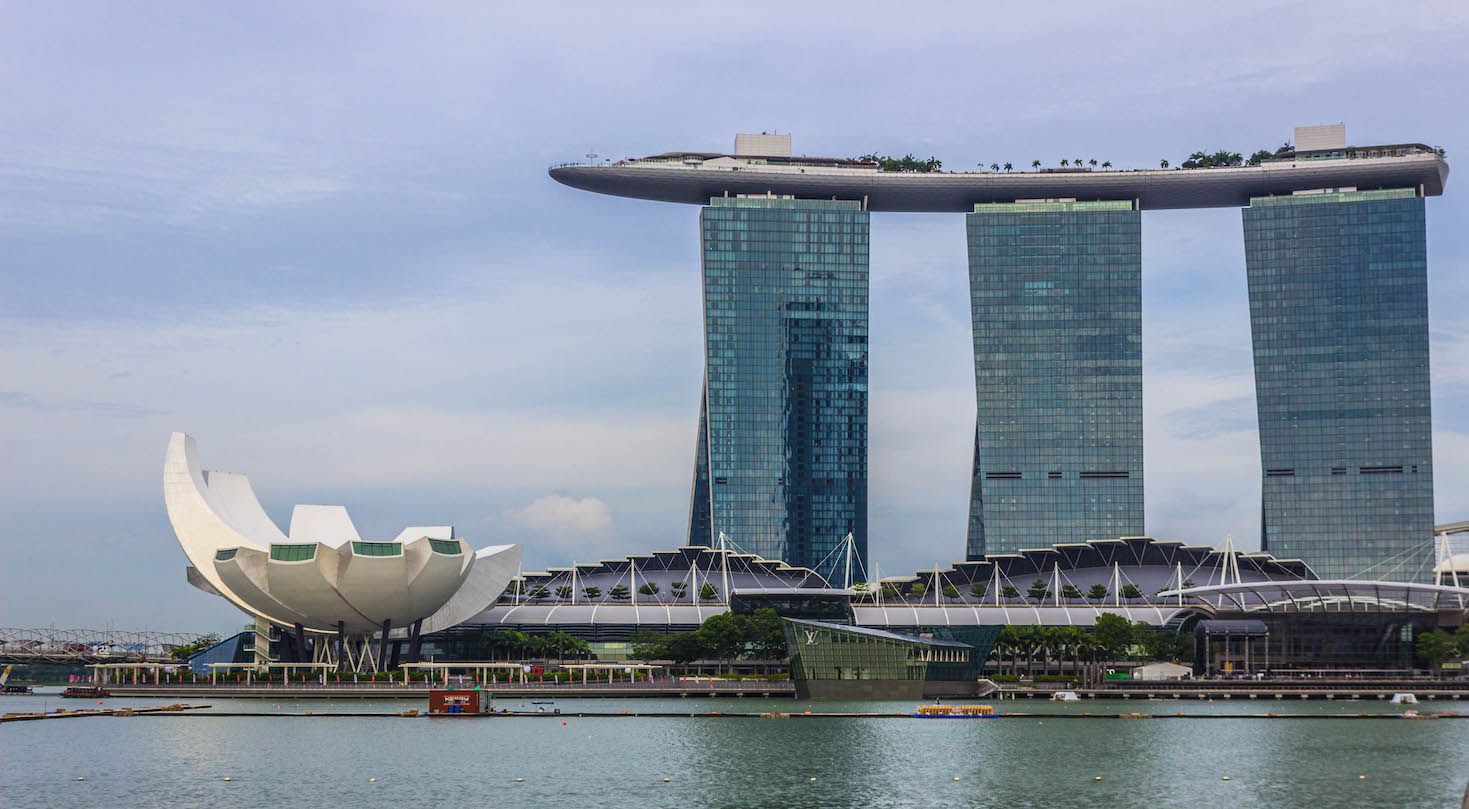
We made our way back up the river, passing many seafood restaurants and bars along the Boat Quay. Most were not yet open for dinner or outside of our budget. So we called it quits at Clarke Quay, where we caught the metro back up to Woodlands to head back into Malaysia for the night. It was a jam-packed Day 1, but exactly what we wanted so we could take it easy on Day 2.
Singaporean Food
Since we already did most of the landmark-hopping on Day 1, Day 2 we used to well… basically, eat. The one thing we couldn’t leave Singapore without trying was chilli crab. Chilli crab is the one of the only indisputably Singaporean dishes that originated on this island, as opposed to most of the food with Chinese, Malay, or Indian influence. We realized on Day 1 that we could not afford the well-known chilli crab seafood restaurants, so what other options did we have? Hawker centers, of course!
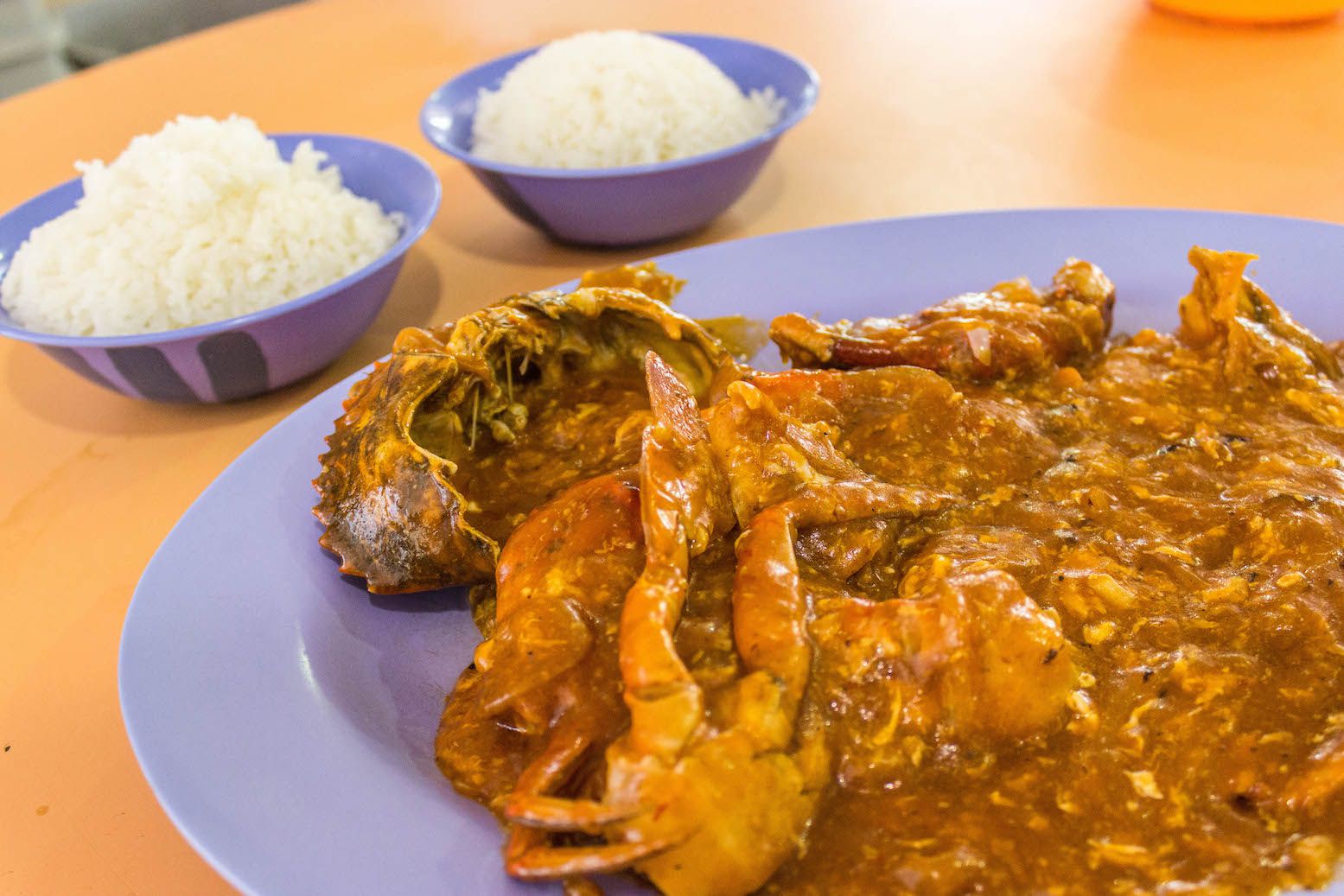
We headed to Old Airport Road Food Centre, one of Singapore’s largest and oldest hawker centers. For me, trying local foods is both a culinary experience as well as a cultural one, so it always feels more authentic when we’re the only foreigners surrounded by a sea of locals. It didn’t take long to find a stall that served chilli crab for about a third of the price of a fancy restaurant. Score! We were served a small mud crab broken to pieces and cooked in a sweet and salty, egg-y, tomato sauce. There was a bowl of water to wash our hands because eating chilli crab is a messy affair, as well as rice to soak up all the yummy sauce. The silence during the meal was an indication of how much we both enjoyed it.

A popular breakfast meal in Singapore consists of kaya toast, soft-boiled eggs, and coffee/tea. Kaya is a coconut jam made up of coconut milk, eggs, and sugar. As expected, it’s a sweet and creamy spread for the toast. The soft-boiled eggs caught us off guard; it took us a bit to realize that we were supposed to dip the kaya toast into the runny egg. Not my favourite thing (though I’m not a fan of most breakfast foods), but it’s as good of a breakfast as any.
Malls in Singapore
I can’t write a post about Singapore without mentioning malls. During the hottest parts of both days, we often sought refuge in malls. From Causeway Point in Woodlands in the very north to VivoCity at the HarbourFront in the very south, we walked through a bunch. The long string of malls along Orchard Road were kind of confusing – it turns out navigating malls is an art, harder than you would think.
While we never bought anything, we did window shop and pick up snacks. This was especially true for the Shoppes at Marina Bay Sands, a luxury mall where the only things we could even begin to afford was food in the food court. Mall food courts often had great meal options. They were like hawker centers where you pay more for the nicer environment and air-conditioning. For such a small island, Singapore had a lot of malls.
Singapore Final Thoughts
Singapore was not a good fit for our budget plans during this trip, but we made it work to the best of our ability. Albeit briefly, we’re really glad we came to see it for ourselves. Singapore couldn’t have been more of a contrast to many other places we’ve visited this past year. By far the cleanest and safest place we have been, Singapore was organized, globalized, and obviously cosmopolitan. It consistently ranks high on measures such as HDI, per capita income, life expectancy and quality of life. In other words, it’s everything you would imagine a progressive nation of the future to be.
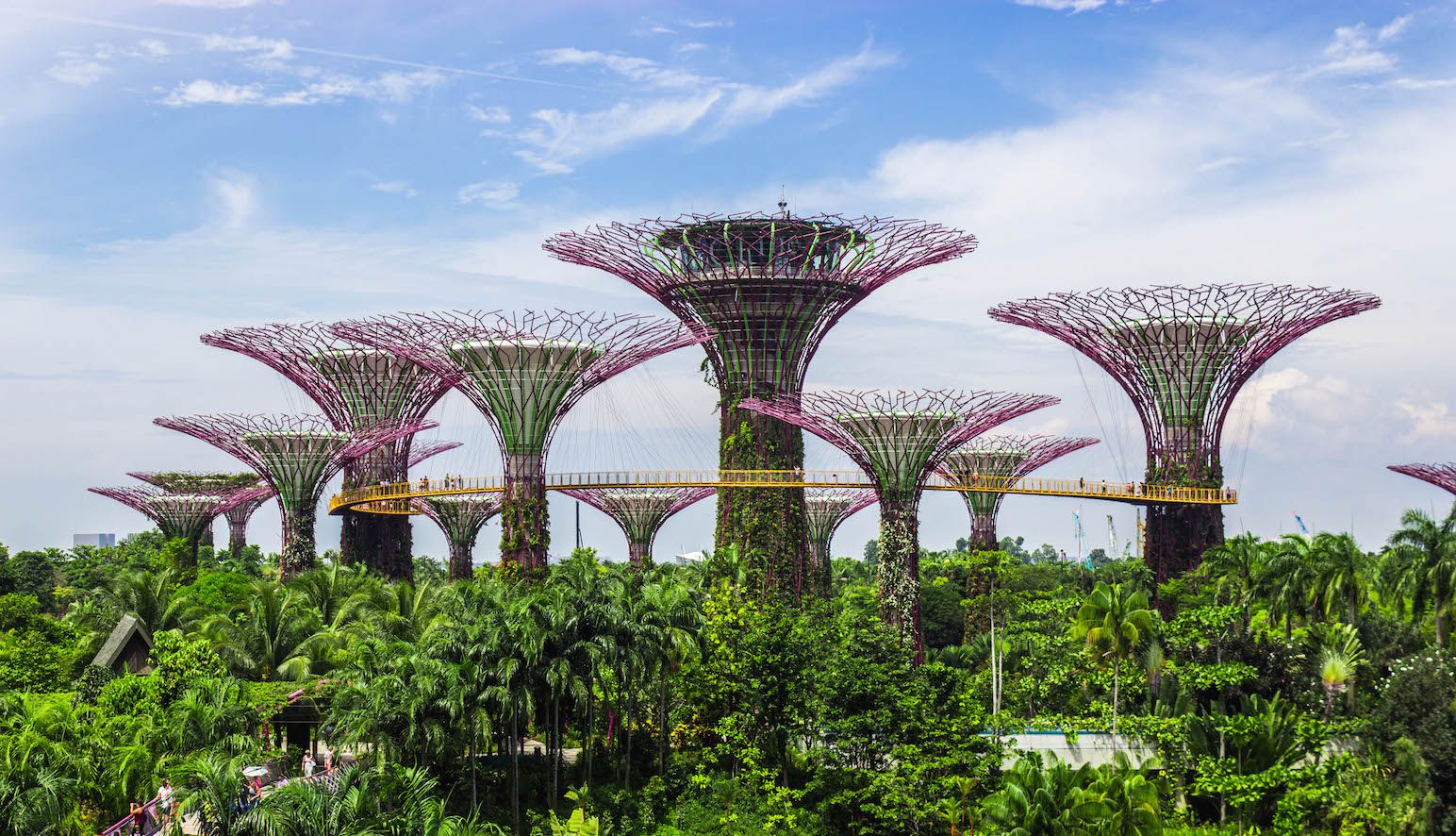
It’s easy to forget that Singapore is a very young country compared to most – separated from Malaysia only 50 years ago when it was a third-world nation like its neighbours. In fact, we were there just a few days short of the 50th anniversary, and it was clear that the entire country was gearing up for the celebrations. SG50 logos and Singapore flags were everywhere. Now, 50 years later, it’s a first-world nation and influential both regionally and globally. In a world where change means one step forward and two steps back, it’s pretty incredible that Singapore was able to progress so drastically in the span of one generation.
Having personally experienced living in developing nations for a lot of this past year, Singapore was such a well-oiled machine in comparison. It gave us the perspective to appreciate what Singapore had to offer that much more. Some might say that the efficiencies and rules take away from the character and personality of a place. I think if anything, it’s the stable foundation upon which everything else can be built. Plus there’s nothing more important for a country than giving its citizens the best possible living standards. In that and all the related senses, Singapore is a true leader and role model in Asia.
For more pictures from Singapore, please visit the gallery!
